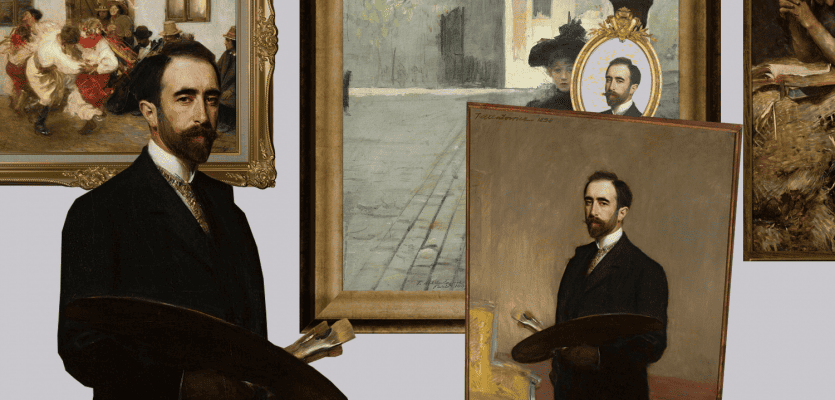Death of Teodor Axentowicz – (August 26, 1938)

Teodor Axentowicz belonged to the old Armenian community of Poland and became one of the famous artists of his time.
He was born on May 13, 1859, in Brasov (Hungary, now Romania), to a family of Polish–Armenian ancestry. He studied at the Academy of Fine Arts in Munich from 1879-1882. Then he moved to Paris, where he was a student of French painter Carolus-Duran and continued his education until 1895. Meanwhile, he started a long-time cooperation with various journals as an art illustrator and making copies of masters like Titian and Botticelli for magazines. He made frequent trips to London and Rome from 1890 to 1899. In London, he married Iza Gielgud, aunt of British famous actor John Gielgud, in 1893. Their son Philip was born in the same year.
In 1894 Axentowicz started collaborating with painters Wojciech Kossak and Jan Stuka in the preparatio of the Racławice Panorama, one of the largest panoramic paintings in the Polish art that commemorated the 100th anniversary of the battle of Racławice, part of the Kosciusko Uprising following the second partition of Poland (1793). Axentowicz moved to Krakow in 1895, becoming a professor at the local Academy of Fine Arts until 1934. He was also active in the local society and cooperated with various societies devoted to propagation of arts and crafts.
As an artist, Axentowicz was one of the leading representatives of Young Poland’s art inspired by Polish folklore and a creator of salon portraits. Throughout his life he had numerous exhibitions, both in Poland and abroad. He was awarded many gold medals at both national and international exhibitions in Krakow, Warsaw, Lodz, Berlin, St. Louis, Munich, London, Vienna, Rome, Venice, Paris, Chicago, and Prague. His paintings may be found in almost all public collections in Poland and in numerous private collections in Poland and abroad.
His fascination with Armenian history and culture was put into evidence by his painting Baptism of Armenia (1900) and the oil sketch Armenians at King Jan Kazimierz’s (1912, 1919), which preceded his composition Armenians in Poland (1930).
Axentowicz founded a school of painting for women in 1897 and soon afterwards became one of the founders of the Sztuka (Art) Association of Polish Artists. In 1910 he became the rector of the Academy of Fine Arts. He was honored with various awards by France, Austria, and Poland. He died on August 26, 1938, in Krakow.
In 2014 fifty-three of his works were exhibited at the National Gallery of Armenia, and the Central Bank of Armenia issued a commemorative coin on the occasion.
